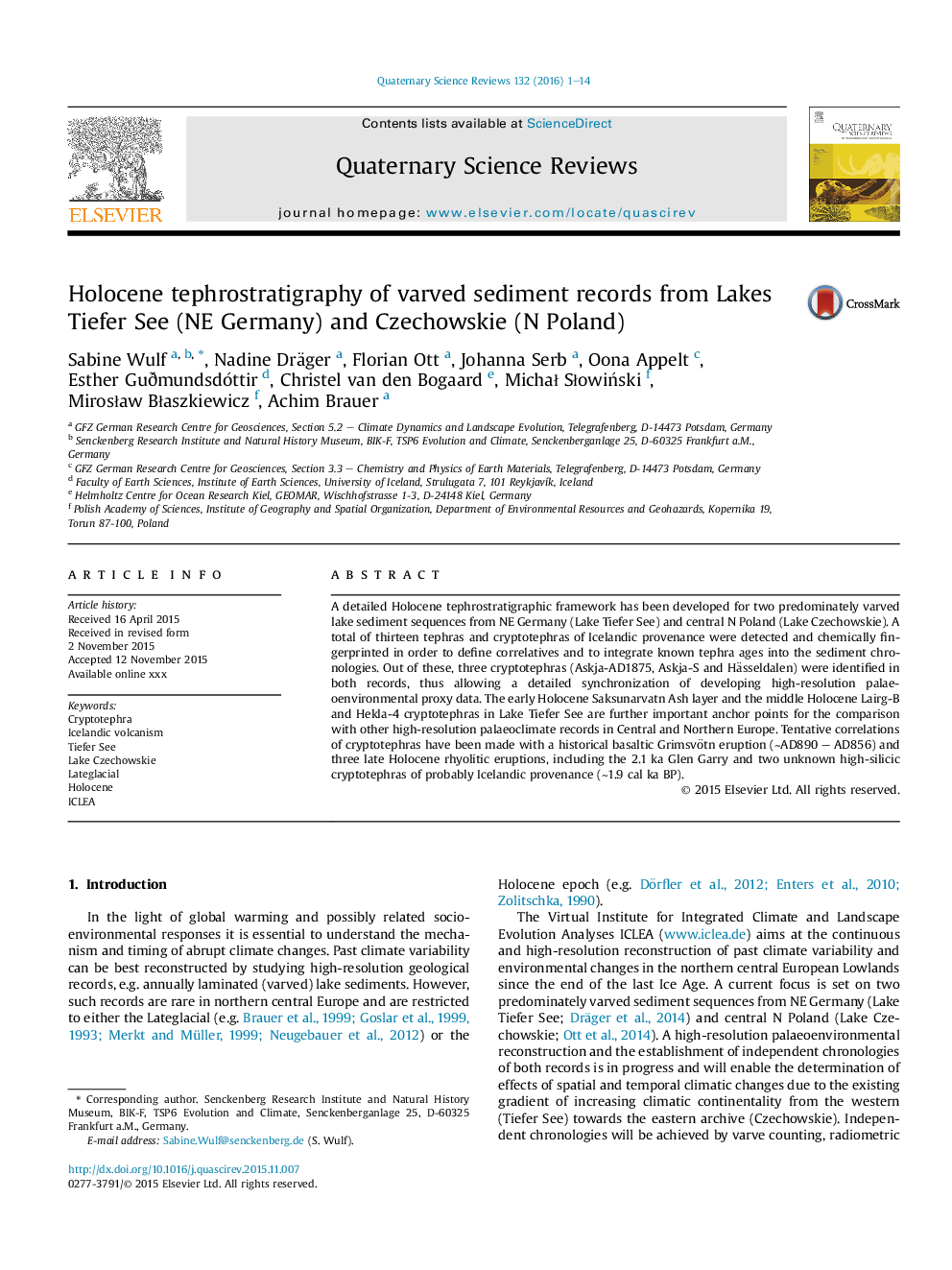| Article ID | Journal | Published Year | Pages | File Type |
|---|---|---|---|---|
| 6446616 | Quaternary Science Reviews | 2016 | 14 Pages |
Abstract
A detailed Holocene tephrostratigraphic framework has been developed for two predominately varved lake sediment sequences from NE Germany (Lake Tiefer See) and central N Poland (Lake Czechowskie). A total of thirteen tephras and cryptotephras of Icelandic provenance were detected and chemically fingerprinted in order to define correlatives and to integrate known tephra ages into the sediment chronologies. Out of these, three cryptotephras (Askja-AD1875, Askja-S and Hässeldalen) were identified in both records, thus allowing a detailed synchronization of developing high-resolution palaeoenvironmental proxy data. The early Holocene Saksunarvatn Ash layer and the middle Holocene Lairg-B and Hekla-4 cryptotephras in Lake Tiefer See are further important anchor points for the comparison with other high-resolution palaeoclimate records in Central and Northern Europe. Tentative correlations of cryptotephras have been made with a historical basaltic Grimsvötn eruption (â¼AD890 - AD856) and three late Holocene rhyolitic eruptions, including the 2.1 ka Glen Garry and two unknown high-silicic cryptotephras of probably Icelandic provenance (â¼1.9 cal ka BP).
Keywords
Related Topics
Physical Sciences and Engineering
Earth and Planetary Sciences
Geology
Authors
Sabine Wulf, Nadine Dräger, Florian Ott, Johanna Serb, Oona Appelt, Esther Guðmundsdóttir, Christel van den Bogaard, MichaÅ SÅowiÅski, MirosÅaw BÅaszkiewicz, Achim Brauer,
